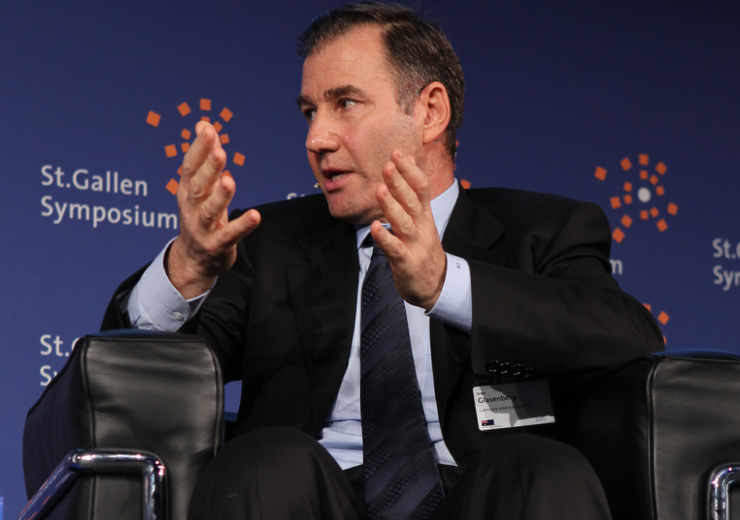Glencore chief executive Ivan Glasenberg leaves after almost two decades in charge, exiting as the miner embarks on a strategy to achieve net-zero by 2050

Ivan Glasenberg first joined Glencore in 1984, and has overseen a transformation of the company during his time as CEO (Credit: Wikimedia Commons/International Students’ Committee)
Big changes are on the horizon for Glencore, after the company announced a net-zero agenda and the exit of its long-standing chief executive at an investor day late last week.
The world’s biggest mining company became the first of its peers to announce a strategy fully aligned with the goals of the Paris Agreement, targeting net-zero emissions – including Scope 3 – by 2050.
Ivan Glasenberg, who has headed the mining giant for almost 19 years, will step down during the first half of next year, to be replaced by Gary Nagle who currently leads the company’s coal business.
The outgoing chief executive, who retains a roughly 9% ownership of Glencore, said the miner will play “an essential role in the global transition to a low-carbon economy” under the stewardship of Nagle.
“As the world prioritises renewable technologies, battery storage and electric mobility, our business is well-positioned to meet the growing demand for the commodities that underpin these future-focused industries,” he added.
Glencore net-zero target includes Scope 3
While many mining companies have already made climate-focused pledges to reduce their emissions, none have matched the scope of Glencore’s target, which aims to eliminate the entirety of its carbon footprint by 2050.
Significantly, this includes Scope 3 emissions – which are those produced by the end use of its products by consumers, and are considered the most important, and challenging, to abate.
The miner has also set an interim target of reducing its emissions by 40% by 2035, compared to 2019 levels. This plan does not envision abandoning its coal-mining assets, however. Instead, “responsible stewardship” and reduction of its coal portfolio will be the priority.
“Under all credible scenarios, fossil fuels (oil, gas and coal) will continue to be an important part of the global energy mix for many years to come,” the firm said in statement. “We do not believe that selling our coal mines would help reduce the associated emissions.”
As the energy transition gathers pace, demand for metals and minerals used in low-carbon technologies, like copper, cobalt and nickel, is poised to skyrocket.
Glencore says it status as a mining and trading company – it is one of the world’s biggest commodity traders – makes it “uniquely positioned” to work directly with customers and promote the use of low-carbon metals and decarbonisation projects.
Glasenberg exit the end of an era
Glasenberg, a South African who turns 64 in the new year, has been at Glencore since 1984.
His departure ends an almost two-decade stint as the chief of the Swiss-based mining company, during which time he oversaw an initial public offering in 2011 and the acquisition of Xstrata the following year – one of the biggest deals in mining history.
He passes the reins over to fellow South African Nagle, who has been at the company since 2002.
“[Nagle] has been on the board’s radar for more than several years and was selected following a succession process overseen by the board,” said Gelncore chairman Tony Hayward. “We are confident that he has the right skill-set and qualities to lead the Glencore of tomorrow.
“As Ivan hands over to Gary, he does so at a time of huge change. As the world moves to recover from the impacts of the Covid-19 pandemic, while also addressing the challenge of climate change, our industry has a significant opportunity to contribute to the economic recovery by providing commodities essential to the transition to a low-carbon economy.”
